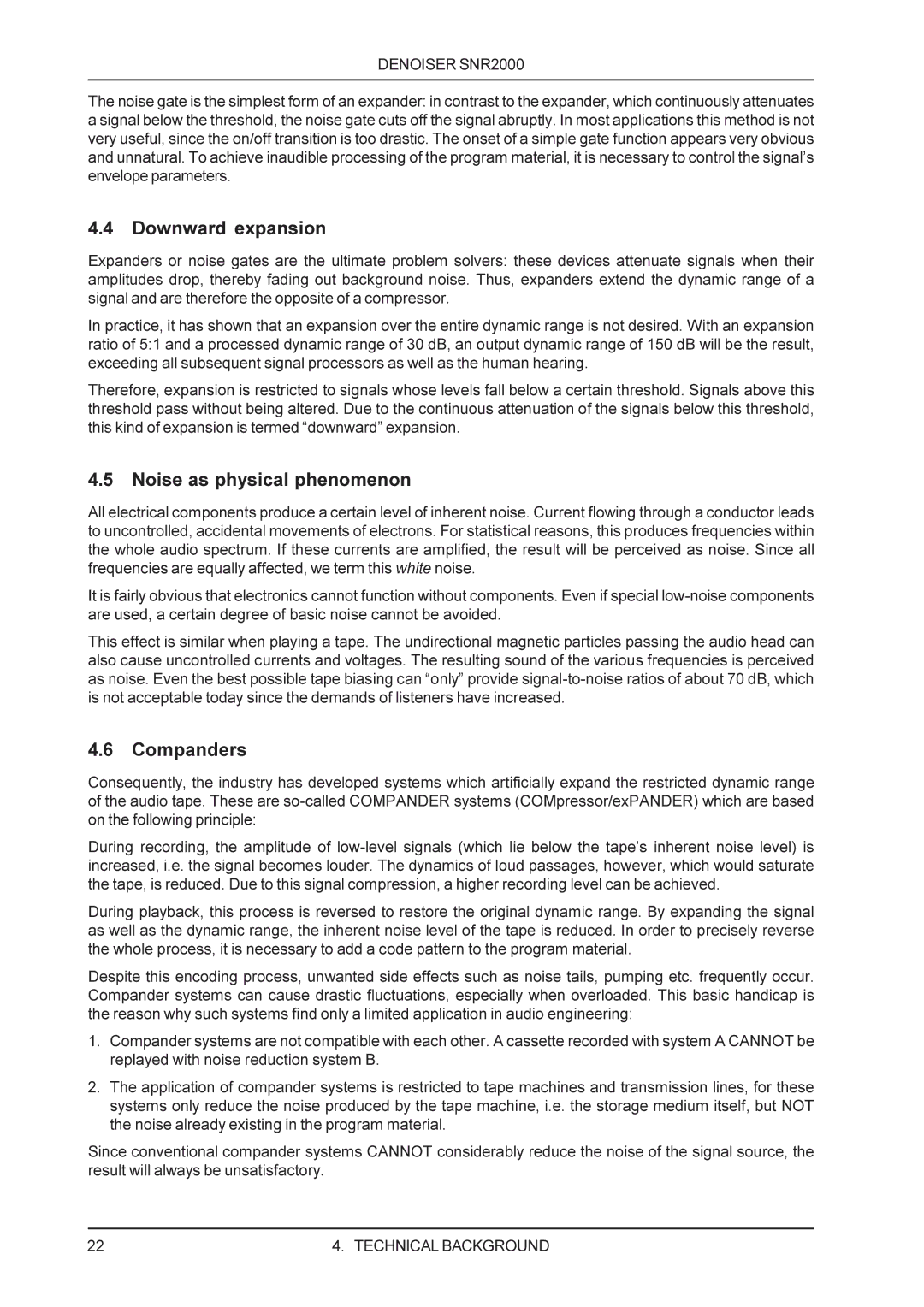
DENOISER SNR2000
The noise gate is the simplest form of an expander: in contrast to the expander, which continuously attenuates a signal below the threshold, the noise gate cuts off the signal abruptly. In most applications this method is not very useful, since the on/off transition is too drastic. The onset of a simple gate function appears very obvious and unnatural. To achieve inaudible processing of the program material, it is necessary to control the signal’s envelope parameters.
4.4 Downward expansion
Expanders or noise gates are the ultimate problem solvers: these devices attenuate signals when their amplitudes drop, thereby fading out background noise. Thus, expanders extend the dynamic range of a signal and are therefore the opposite of a compressor.
In practice, it has shown that an expansion over the entire dynamic range is not desired. With an expansion ratio of 5:1 and a processed dynamic range of 30 dB, an output dynamic range of 150 dB will be the result, exceeding all subsequent signal processors as well as the human hearing.
Therefore, expansion is restricted to signals whose levels fall below a certain threshold. Signals above this threshold pass without being altered. Due to the continuous attenuation of the signals below this threshold, this kind of expansion is termed “downward” expansion.
4.5 Noise as physical phenomenon
All electrical components produce a certain level of inherent noise. Current flowing through a conductor leads to uncontrolled, accidental movements of electrons. For statistical reasons, this produces frequencies within the whole audio spectrum. If these currents are amplified, the result will be perceived as noise. Since all frequencies are equally affected, we term this white noise.
It is fairly obvious that electronics cannot function without components. Even if special
This effect is similar when playing a tape. The undirectional magnetic particles passing the audio head can also cause uncontrolled currents and voltages. The resulting sound of the various frequencies is perceived as noise. Even the best possible tape biasing can “only” provide
4.6 Companders
Consequently, the industry has developed systems which artificially expand the restricted dynamic range of the audio tape. These are
During recording, the amplitude of
During playback, this process is reversed to restore the original dynamic range. By expanding the signal as well as the dynamic range, the inherent noise level of the tape is reduced. In order to precisely reverse the whole process, it is necessary to add a code pattern to the program material.
Despite this encoding process, unwanted side effects such as noise tails, pumping etc. frequently occur. Compander systems can cause drastic fluctuations, especially when overloaded. This basic handicap is the reason why such systems find only a limited application in audio engineering:
1.Compander systems are not compatible with each other. A cassette recorded with system A CANNOT be replayed with noise reduction system B.
2.The application of compander systems is restricted to tape machines and transmission lines, for these systems only reduce the noise produced by the tape machine, i.e. the storage medium itself, but NOT the noise already existing in the program material.
Since conventional compander systems CANNOT considerably reduce the noise of the signal source, the result will always be unsatisfactory.
22 | 4. TECHNICAL BACKGROUND |
